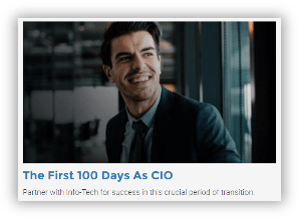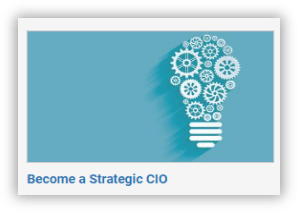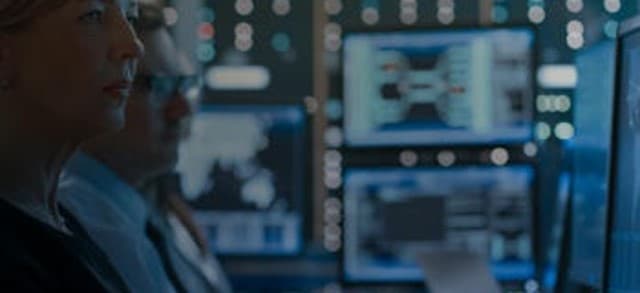Effectively Manage CxO Relations

With the exponential pace of technological change, an organization's success will depend largely on how well CIOs can evolve from technology evangelists to strategic business partners. This will require CIOs to effectively broker relationships to improve IT's effectiveness and create business value. A confidential journal can help you stay committed to fostering productive relationships while building trust to expand your sphere of influence.
Our Advice
Critical Insight
Highly effective executives have in common the ability to successfully balance three things: time, personal capabilities, and relationships. Whether you are a new CIO or an experienced leader, the relentless demands on your time and unpredictable shifts in the organization’s strategy require a personal game plan to deliver business value. Rather than managing stakeholders one IT project at a time, you need an action plan that is tailored for unique work styles.
Impact and Result
A personal relationship journal will help you:
- Understand the context in which key stakeholders operate.
- Identify the best communication approach to engage with different workstyles.
- Stay committed to fostering relationships through difficult periods.
Effectively Manage CxO Relations Research & Tools
Besides the small introduction, subscribers and consulting clients within this management domain have access to:
1. Effectively Manage CxO Relations Storyboard – A guide to creating a personal action plan to help effectively manage relationships across key stakeholders.
Use this research to create a personal relationship journal in four steps:
- Effectively Manage CxO Relations Storyboard
2. Personal Relationship Management Journal Template – An exemplar to help you build your personal relationship journal.
Use this exemplar to build a journal that is readily accessible, flexible, and easy to maintain.
- Personal Relationship Management Journal Template
Infographic
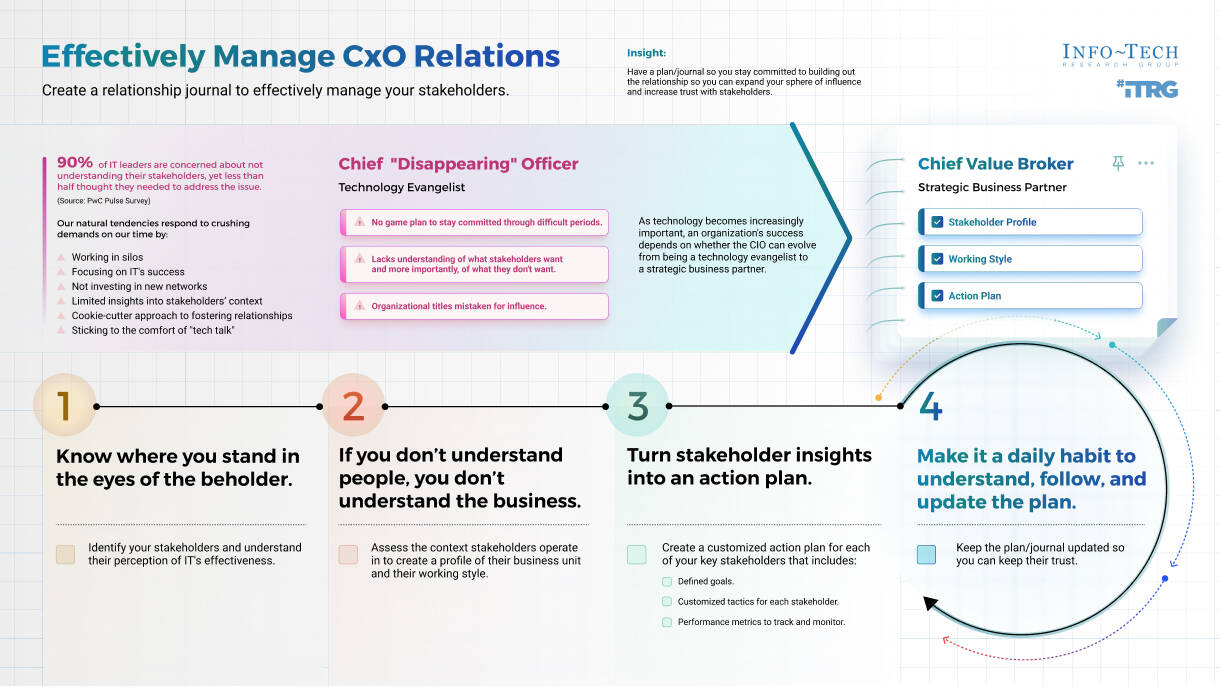
Further reading
Effectively Manage CxO Relations
Make relationship management a daily habit with a personalized action plan.
Analyst Perspective
"Technology does not run an enterprise, relationships do." – Patricia Fripp
As technology becomes increasingly important, an organization's success depends on the evolution of the modern CIO from a technology evangelist to a strategic business leader. The modern CIO will need to leverage their expansive partnerships to demonstrate the value of technology to the business while safeguarding their time and effort on activities that support their strategic priorities. CIOs struggling to transition risk obsolescence with the emergence of new C-suite roles like the Digital Transformation Officer, Chief Digital Officer, Chief Data Officer, and so on.
CIOs will need to flex new social skills to accommodate diverse styles of work and better predict dynamic situations. This means expanding beyond their comfort level to acquire new social skills. Having a clear understanding of one's own work style (preferences, natural tendencies, motivations, and blind spots) is critical to identify effective communication and engagement tactics.
Building trust is an art. Striking a balance between fulfilling your own goals and supporting others will require a carefully curated approach to navigate the myriad of personalities and work styles. A personal relationship journal will help you stay committed through these peaks and troughs to foster productive partnerships and expand your sphere of influence over the long term.

Joanne Lee
Principal, Research Director, CIO Advisory
Info-Tech Research Group
Executive Summary
Your ChallengeIn today's unpredictable markets and rapid pace of technological disruptions, CIOs need to create business value by effectively brokering relationships to improve IT's performance. Challenges they face:
|
Common ObstaclesLimited span of influence. Mistaking formal roles in organizations for influence. Understanding what key individuals want and, more importantly, what they don't want. Lack of situational awareness to adapt communication styles to individual preferences and context. Leveraging different work styles to create a tangible action plan. Perceiving relationships as "one and done." |
Info-Tech's ApproachA personal relationship journal will help you stay committed to fostering productive relationships while building trust to expand your sphere of influence.
|
Info-Tech Insight
Highly effective executives have in common the ability to balance three things: time, personal capabilities, and relationships. Whether you are a new CIO or an experienced leader, the relentless demand on your time and unpredictable shifts in the organization's strategy will require a personal game plan to deliver business value. This will require more than managing stakeholders one IT project at a time: It requires an action plan that fosters relationships over the long term.
Key Concepts
Stakeholder Management
A common term used in project management to describe the successful delivery of any project, program, or activity that is associated with organizational change management. The goal of stakeholder management is intricately tied to the goals of the project or activity with a finite end. Not the focus of this advisory research.
Relationship Management
A broad term used to describe the relationship between two parties (individuals and/or stakeholder groups) that exists to create connection, inclusion, and influence. The goals are typically associated with the individual's personal objectives and the nature of the interaction is seen as ongoing and long-term.
Continuum of Commitment
Info-Tech's framework that illustrates the different levels of commitment in a relationship. It spans from active resistance to those who are committed to actively supporting your personal priorities and objectives. This can be used to baseline where you are today and where you want the relationship to be in the future.
Work Style
A reference to an individual's natural tendencies and expectations that manifest itself in their communication, motivations, and leadership skills. This is not a behavior assessment nor a commentary on different personalities but observable behaviors that can indicate different ways people communicate, interact, and lead.
Glossary
CDxO: Chief Digital Officer
CDO: Chief Data Officer
CxO: C-Suite Executives
The C-suite is getting crowded, and CIOs need to foster relationships to remain relevant
The span of influence and authority for CIOs is diminishing with the emergence of Chief Digital Officers and Chief Data Officers.
63% of CDxOs report directly to the CEO ("Rise of the Chief Digital Officer," CIO.com)
44% of organizations with a dedicated CDxO in place have a clear digital strategy versus 22% of those without a CDxO (KPMG/Harvey Nash CIO Survey)
The "good news": CIOs tend to have a longer tenure than CDxOs.
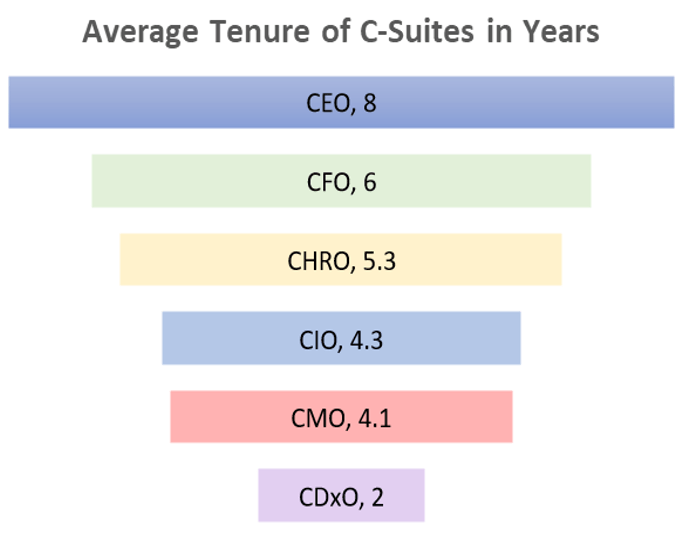
Source: "Age and Tenure of C-Suites," Korn Ferry
The "bad news": The c-suite is getting overcrowded with other roles like Chief Data Officer.
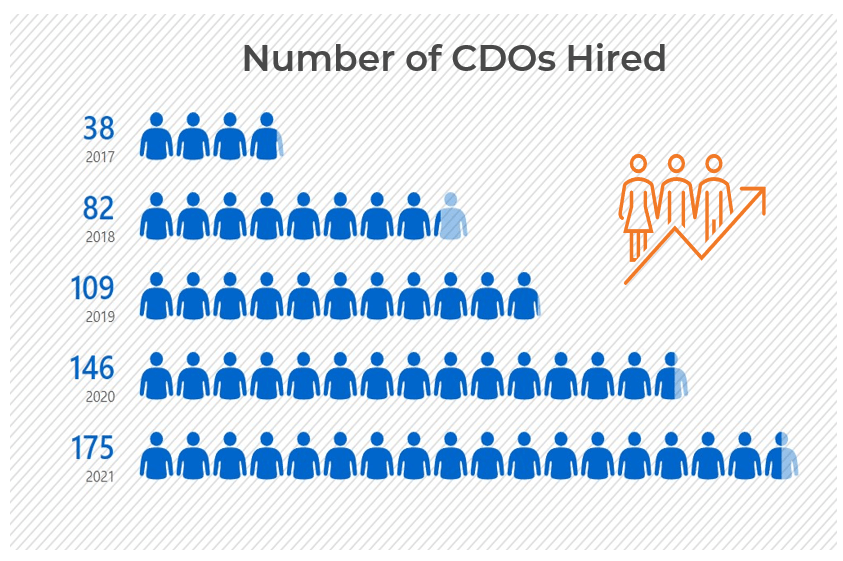
Source: "Chief Data Officer Study," PwC, 2022
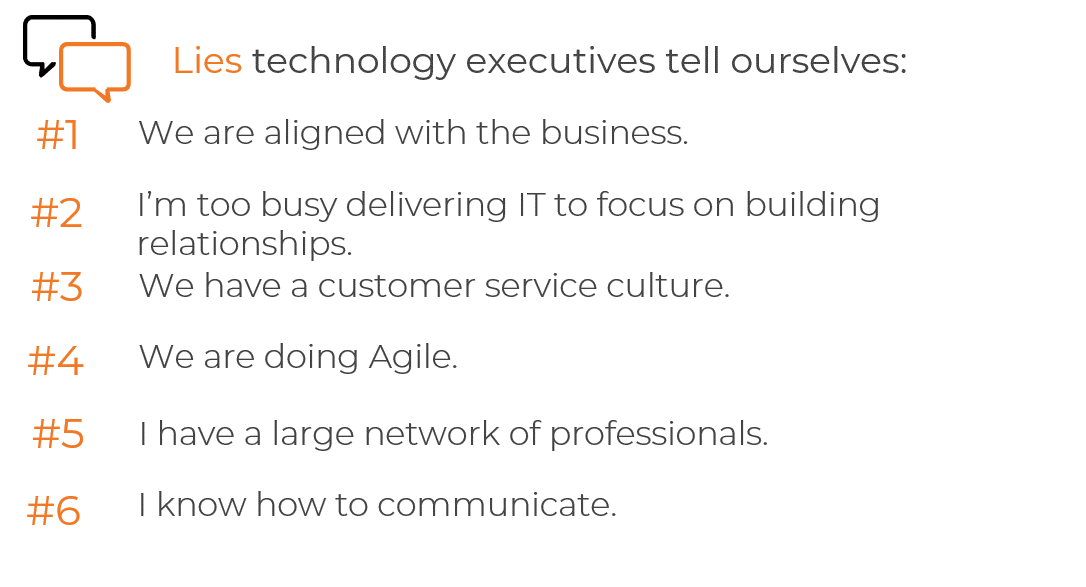
Info-Tech Insight
The digital evolution has created the emergence of new roles like the Chief Digital Officer and Chief Data Officer. They are a response to bridge the skill gap that exists between the business and technology. CIOs need to focus on building effective partnerships to better communicate the business value generated by technology or they risk becoming obsolete.
Create a relationship journal to effectively manage your stakeholders
Info-Tech's approach
From managing relationships with friends to key business partners, your success will come from having the right game plan. Productive relationships are more than managing stakeholders to support IT initiatives. You need to effectively influence those who have the potential to champion or derail your strategic priorities. Understanding differences in work styles is fundamental to adapting your communication approach to various personalities and situations.
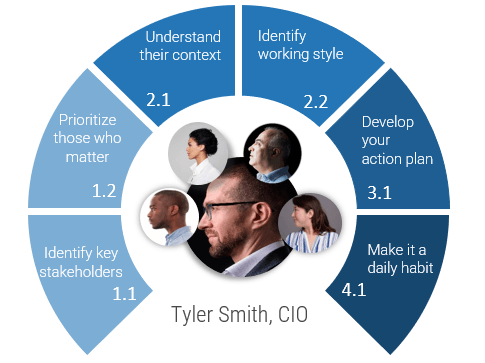
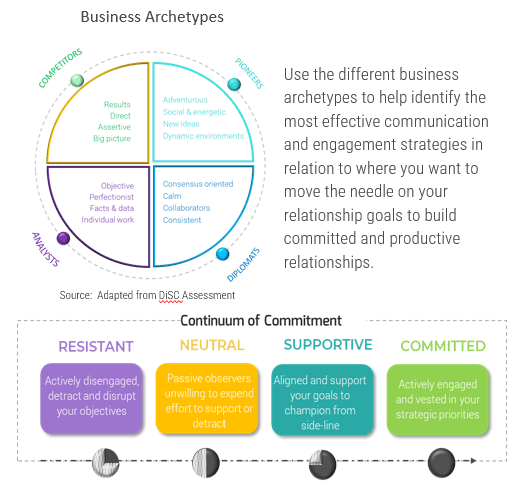
Summary of Insights
Insight 1: Expand your sphere of influence
It's not just about gaining a volume of acquaintances. Figure out where you want to spend your limited time, energy, and effort to develop a network of professional allies who will support and help you achieve your strategic priorities.
Insight 2: Know thyself first and foremost
Healthy relationships start with understanding your own working style, preferences, and underlying motivations that drive your behavior and ultimately your expectations of others. A win/win scenario emerges when both parties' needs for inclusion, influence, and connection are met or mutually conceded.
Insight 3: Walk a mile in their shoes
If you want to build successful partnerships, you need to understand the context in which your stakeholder operates: their motivations, desires, priorities, commitments, and challenges. This will help you adapt as their needs shift and, moreover, leverage empathy to identify the best tactics for different working styles.
Insight 4: Nurturing relationships is a daily commitment
Building, fostering, and maintaining professional relationships requires a daily commitment to a plan to get through tough times, competing priorities, and conflicts to build trust, respect, and a shared sense of purpose.
Related Info-Tech Research
Supplement your CIO journey with these related blueprints.
|
|
First 100 Days as CIO |
|
|
Become a Strategic CIO |
|
|
Improve IT Team Effectiveness |
|
|
Become a Transformational CIO |
Executive Brief Case Study

- Industry: Community Services
- Source: Scott Lawry, Head of Digital
Conversation From Down Under
What are the hallmarks of a healthy relationship with your key stakeholders?
"In my view, I work with partners like they are an extension of my team, as we rely on each other to achieve mutual success. Partnerships involve a deeper, more intimate relationship, where both parties are invested in the long-term success of the business."
Why is it important to understand your stakeholder's situation?
"It's crucial to remember that every IT project is a business project, and vice versa. As technology leaders, our role is to demystify technology by focusing on its business value. Empathy is a critical trait in this endeavor, as it allows us to see a stakeholder's situation from a business perspective, align better with the business vision and goals, and ultimately connect with people, rather than just technology."
How do you stay committed during tough times?
"I strive to leave emotions at the door and avoid taking a defensive stance. It's important to remain neutral and not personalize the issue. Instead, stay focused on the bigger picture and goals, and try to find a common purpose. To build credibility, it's also essential to fact-check assumptions regularly. By following these principles, I approach situations with a clear mind and better perspective, which ultimately helps achieve success."

Key Takeaways
In a recent conversation with a business executive about the evolving role of CIOs, she expressed: "It's the worst time to be perceived as a technology evangelist and even worse to be perceived as an average CIO who can't communicate the business value of technology."
This highlights the immense pressure many CIOs face when evolving beyond just managing the IT factory.
The modern CIO is a business leader who can forge relationships and expand their influence to transform IT into a core driver of business value.
Stakeholder Sentiment
Identify key stakeholders and their perception of IT's effectiveness
1.1 Identify Key Stakeholders
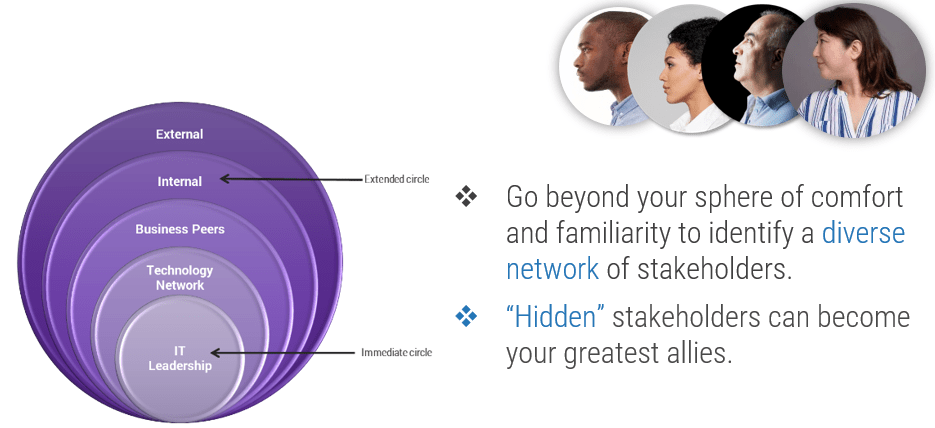
Identify and prioritize your key stakeholders. Be diligent with stakeholder identification. Use a broad view to identify stakeholders who are known versus those who are "hidden." If stakeholders are missed, then so are opportunities to expand your sphere of influence.
1.2 Understand Stakeholder's Perception of IT

Assess stakeholder sentiments from Info-Tech's diagnostic reports and/or your organization's satisfaction surveys to help identify individuals who may have the greatest influence to support or detract IT's performance and those who are passive observers that can become your greatest allies. Determine where best to focus your limited time amid competing priorities by focusing on the long-term goals that support the organization's vision.
Info-Tech Insight
Understand which individuals can directly or indirectly influence your ability to achieve your priorities. Look inside and out, as you may find influencers beyond the obvious peers or executives in an organization. Influence can result from expansive connections, power of persuasion, and trust to get things done.
Visit Info-Tech's Diagnostic Programs
Activity: Identify and Prioritize Stakeholders
30-60 minutes
1.1 Identify Key Stakeholders
Start with the key stakeholders that are known to you. Take a 360-degree view of both internal and external connections. Leverage external professional & network platforms (e.g. LinkedIn), alumni connections, professional associations, forums, and others that can help flush out hidden stakeholders.
1.2 Prioritize Key Stakeholders
Use stakeholder satisfaction surveys like Info-Tech's Business Vision diagnostic as a starting point to identify those who are your allies and those who have the potential to derail IT's success, your professional brand, and your strategic priorities. Review the results of the diagnostic reports to flush out those who are:
- Resisters: Vocal about their dissatisfaction with IT's performance and actively sabotage or disrupt
- Skeptics: Disengaged, passive observers
- Ambassadors: Aligned but don't proactively support
- Champions: Actively engaged and will proactively support your success
Consider the following:
- Influencers may not have formal authority within an organization but have relationships with your stakeholders.
- Influencers may be hiding in many places, like the coach of your daughter's soccer team who rows with your CEO.
- Prioritize, i.e. three degrees of separation due to potential diverse reach of influence.
Key Output: Create a tab for your most critical stakeholders.

Download the Personal Relationship Management Journal Template.
Understand stakeholders' business
Create a stakeholder profile to understand the context in which stakeholders operate.
2.1 Create individual profile for each stakeholder
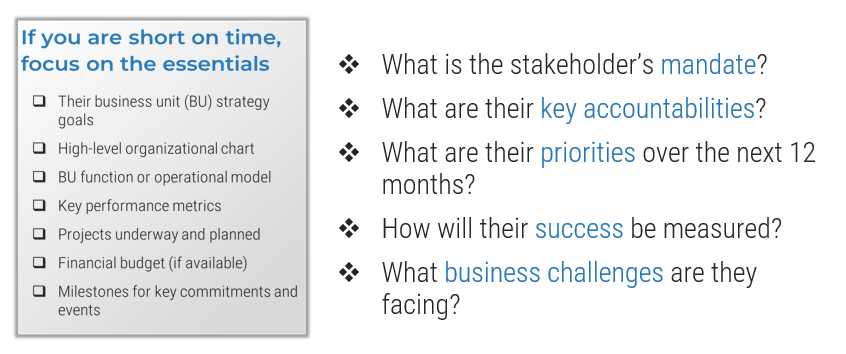
Collect and analyze key information to understand the context in which your stakeholders operate. Use the information to derive insights about their mandate, accountabilities, strategic goals, investment priorities, and performance metrics and challenges they may be facing.
Stakeholder profiles can be used to help design the best approach for personal interactions with individuals as their business context changes.
If you are short on time, use this checklist to gather information:
- Stakeholder's business unit (BU) strategy goals
- High-level organizational chart
- BU operational model or capability map
- Key performance metrics
- Projects underway and planned
- Financial budget (if available)
- Milestone dates for key commitments and events
- External platforms like LinkedIn, Facebook, Twitter, Slack, Instagram, Meetup, blogs
Info-Tech Insight
Understanding what stakeholders want (and more importantly, what they don't) requires knowing their business and the personal and social circumstances underlying their priorities and behaviors.
Activity: Create a stakeholder profile
30-60 minutes
2.1.0 Understand stakeholder's business context
Create a profile for each of your priority stakeholders to document their business context. Review all the information collected to understand their mandate, core accountability, and business capabilities. The context in which individuals operate is a window into the motivations, pressures, and vested interests that will influence the intersectionality between their expectations and yours.
2.1.1 Document Observable Challenges as Private Notes
Crushing demands and competing priorities can lead to tension and stress as people jockey to safeguard their time. Identify some observable challenges to create greater situational awareness. Possible underlying factors:
- Sudden shifts/changes in mandate
- Performance (operations, projects)
- Finance
- Resource and talent gaps
- Politics
- Personal circumstances
- Capability gaps/limitations
- Capacity challenges

Analyze Stakeholder's Work Style
Adapt communication styles to the situational context in which your stakeholders operate
2.2 Determine the ideal approach for engaging each stakeholder
Each stakeholder has a preferred modality of working which is further influenced by dynamic situations. Some prefer to meet frequently to collaborate on solutions while others prefer to analyze data in solitude before presenting information to substantiate recommendations. However, fostering trust requires:
- Understanding your preferred default when engaging others.
- Knowing where you need to expand your skills.
- Identifying which skills to activate for different professional scenarios.
Adapting your communication style to create productive interactions will require a diverse arsenal of interpersonal skills that you can draw upon as situations shift. The ability to adapt your work style to dial any specific trait up or down will help to increase your powers of persuasion and influence.
"There are only two ways to influence human behavior: you can manipulate it, or you can inspire it." – Simon Sinek
Activity: Identify Engagement Strategies
30 minutes
2.2.0 Establish work styles
Every individual has a preferred style of working. Determine work styles starting with self-awareness:
- Express myself - How you communicate and interact with others
- Expression by others - How you want others to communicate and interact with you
Through observation and situational awareness, we can make inferences about people's work style.
- Observations - Observable traits of other people's work style
- Situations - Personal and professional circumstances that influence how we communicate and interact with one another
Where appropriate and when opportunities arise, ask individuals directly about their preferred work styles and method for communication. What is their preferred method of communication? During a normal course of interaction vs. for urgent priorities?
2.2.1 Brainstorm possible engagement strategies
Consider the following when brainstorming engagement strategies for different work styles.
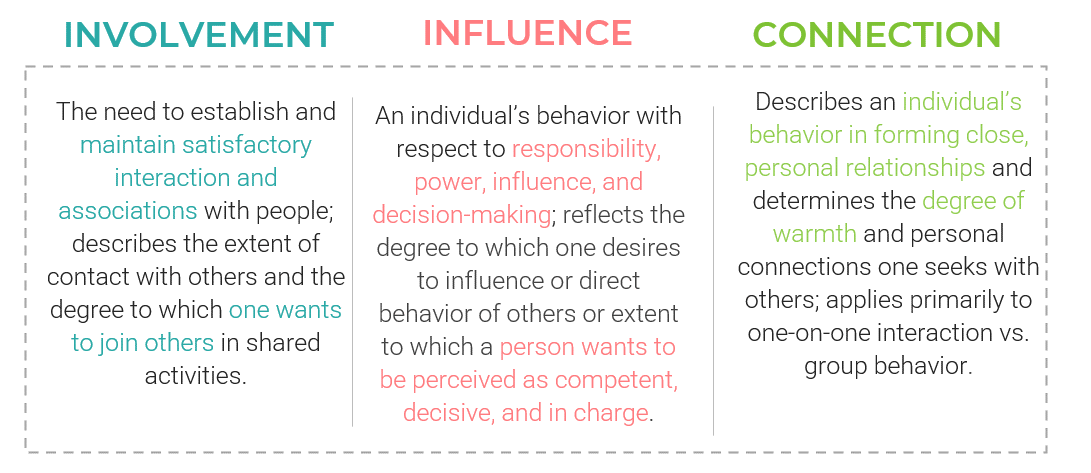
Think engagement strategies in different professional scenarios:
- Meetings - Where and how you connect
- Communicating - How and what you communicate to create connection
- Collaborating - What degree of involved in shared activities
- Persuading - How you influence or direct others to get things done
Expand New Interpersonal Skills
Use the Business Archetypes to brainstorm possible approaches for engaging with different work styles. Additional communication and engagement tactics may need to be considered based on circumstances and changing situations.
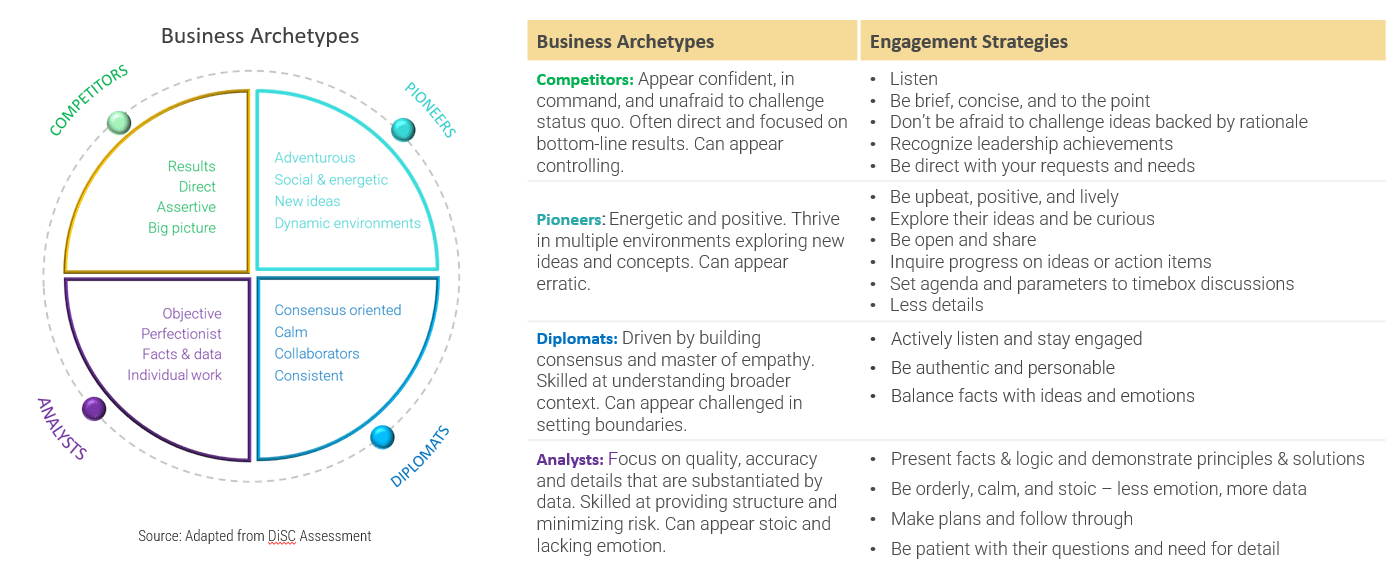
Communicate Effectively
Productive communication is a dialogue that requires active listening, tailoring messages to fluid situations, and seeking feedback to adapt.

Be Relevant
- Understand why you need to communicate
- Determine what you need to convey
- Tailor your message to what matters to the audience and their context
- Identify the most appropriate medium based on the situation
Be Consistent and Accurate
- Say what you mean and mean what you say to avoid duplicity
- Information should be accurate and complete
- Communicate truthfully; do not make false promises or hide bad news
- Don't gossip
Be Clear and Concise
- Keep it simple and avoid excessive jargon
- State asks upfront to set intention and transparency
- Avoid ambiguity and focus on outcomes over details
- Be brief and to the point or risk losing stakeholder's attention
Be Attentive and Authentic
- Stay engaged and listen actively
- Be curious and inquire for clarification or explanation
- Be flexible to adapt to both verbal and non-verbal cues
- Be authentic in your approach to sharing yourself
- Avoid "canned" approaches

"Good communication is the bridge between confusion and clarity."– Nat Turner (LinkedIn, 2020)
Exemplar: Engaging With Jane
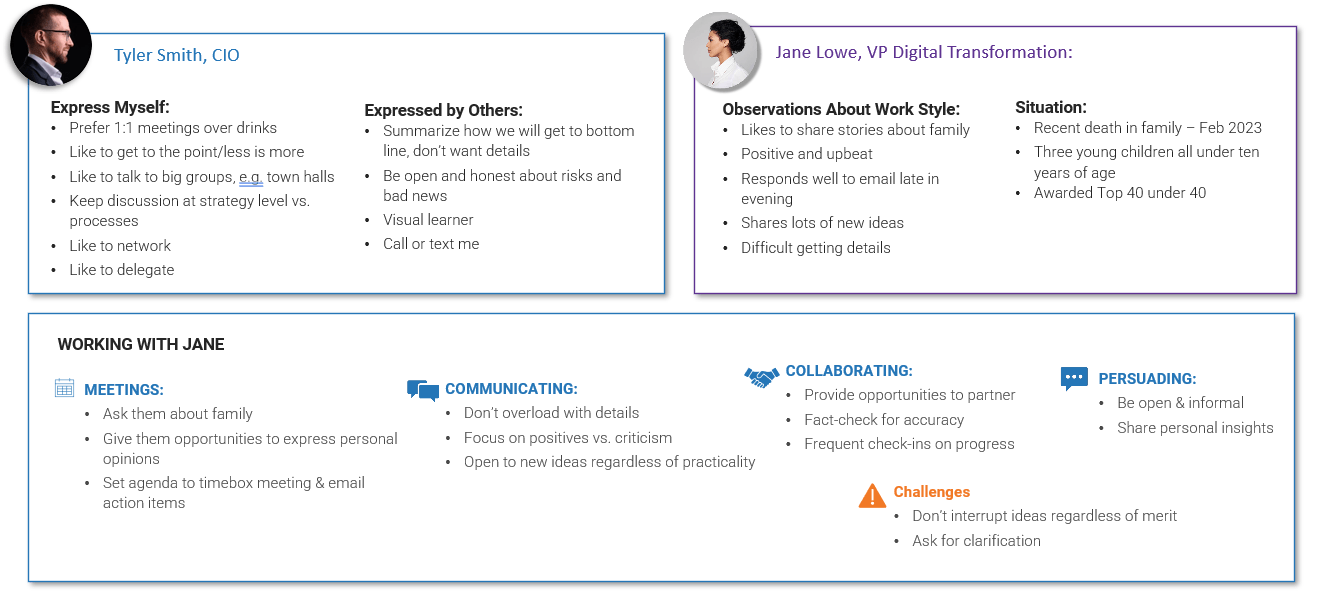
Exemplar: Engaging With Ali
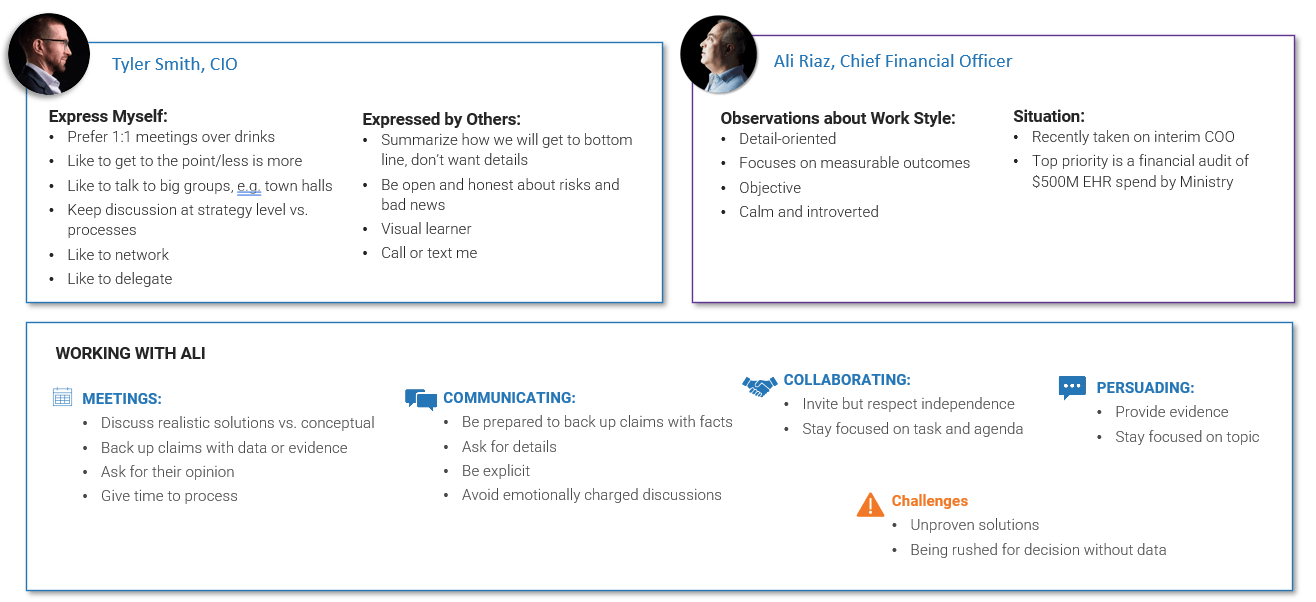
Develop an Action Plan
Moving from intent to action requires a plan to ensure you stay committed through the peaks and troughs.
Create Your 120-Day Plan
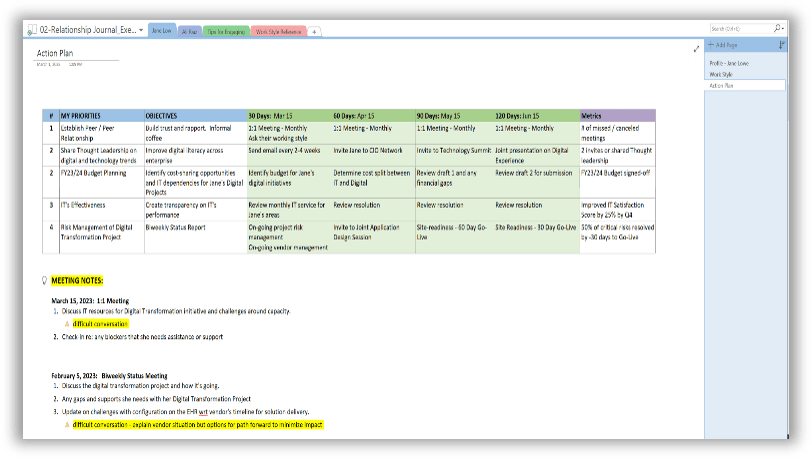
Key elements of the action plan:
- Strategic priorities – Your top focus
- Objective – Your goals
- 30-60-90-120 Day Topics – Key agenda items
- Meeting Progress Notes – Key takeaways from meetings
- Private Notes – Confidential observations
Investing in relationships is a long-term process. You need to accumulate enough trust to trade or establish coalitions to expand your sphere of influence. Even the strongest of professional ties will have their bouts of discord. To remain committed to building the relationship during difficult periods, use an action plan that helps you stay grounded around:
- Shared purpose
- Removing emotion from the situation
- Continuously learning from every interaction
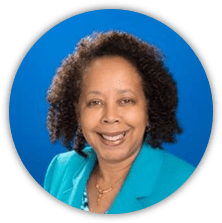
"Make intentional actions to set intentionality. Plans are good to keep you grounded and focused especially when relationship go through ups and down and there are changes: to new people and new relationships."
– Angela Diop, Senior Director, Executive Services, Info-Tech & former VP of Information Services with Unity Health Care
Activity: Design a Tailored Action Plan
30-60 minutes
3.1.0 Determine your personal expectations
Establish your personal goals and expectations around what you are seeking from the relationship. Determine the strength of your current connection and identify where you want to move the relationship across the continuum of commitment.
Use insights from your stakeholder's profile to explore their span of influence and degree of interest in supporting your strategic priorities.
3.1.1 Determine what you want from the relationship
Based on your personal goals, identify where you want to move the relationship across the continuum of commitment: What are you hoping to achieve from the relationship? How will this help create a win/win situation for both you and the key stakeholder?

3.1.2 Identify your metrics for progress
Fostering relationships take time and commitment. Utilizing metrics or personal success criteria for each of your focus areas will help you stay on track and find opportunities to make each engagement valuable instead of being transactional.
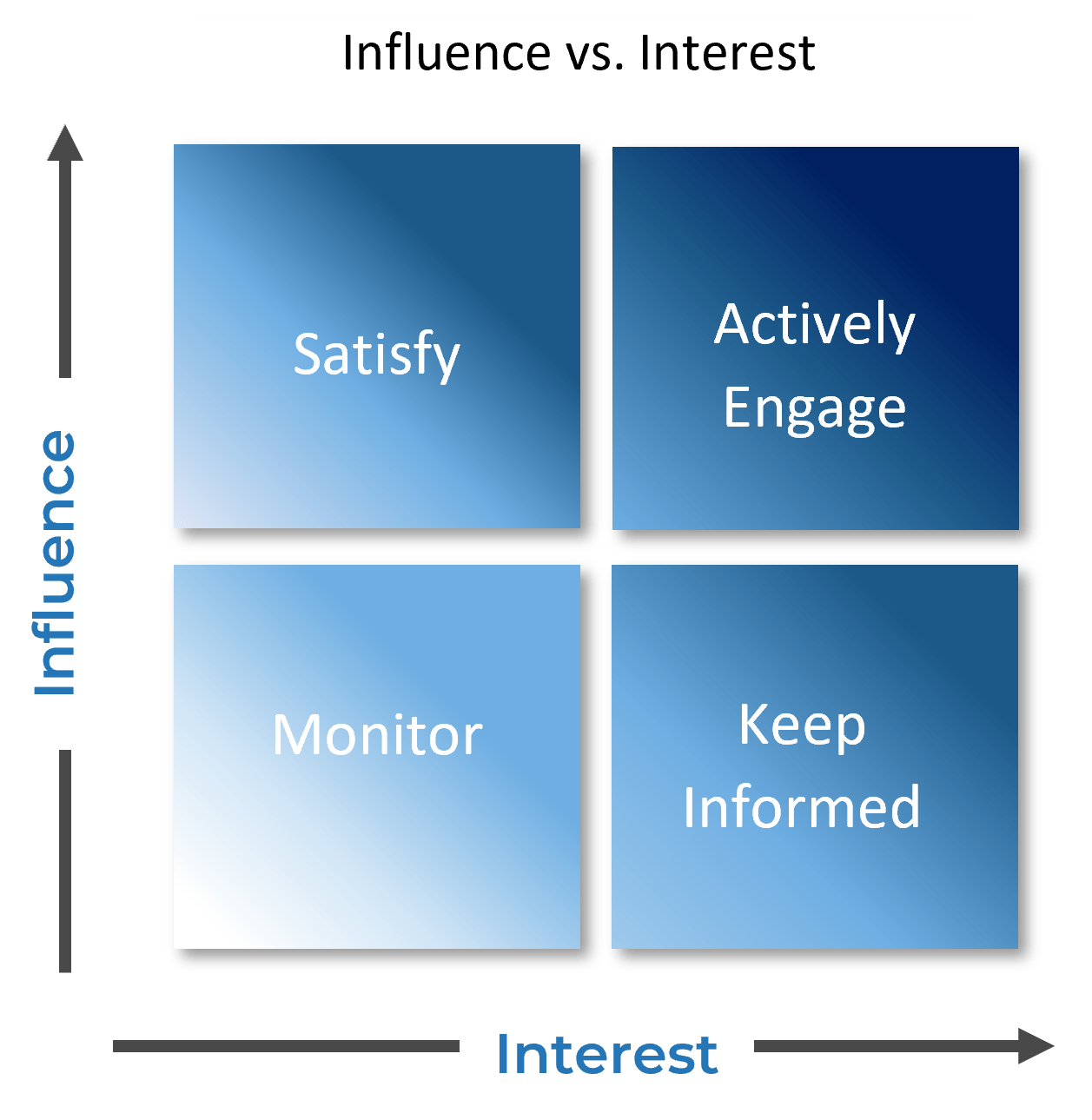
Make your action plan impactful
Level of Connection
The strength of the relationship will help inform the level of time and effort needed to achieve your goals.
- Is this a new or existing relationship?
- How often do you connect with this individual?
- Are the connections driven by a shared purpose or transactional as needs arise?
Focus on Relational Value
Cultivate your network and relationship with the goal of building emotional connection, understanding, and trust around your shared purpose and organization's vision through regular dialogue. Be mindful of transactional exchanges ("quid pro quo") to be strategic about its use. Treat every interaction as equally important regardless of agenda, duration, or channel of communication.
Plan and Prepare
Everyone's time is valuable, and you need to come prepared with a clear understanding of why you are engaging. Think about the intentionality of the conversation:
- Gain buy-in
- Create transparency
- Specific ask
- Build trust and respect
- Provide information to clarify, clear, or contain a situation
Non-Verbal Communication Matters
Communication is built on both overt expressions and subtext. While verbal communication is the most recognizable form, non-lexical components of verbal communication (i.e. paralanguage) can alter stated vs. intended meaning. Engage with the following in mind:
- Tone, pitch, speed, and hesitation
- Facial expressions and gestures
- Choice of channel for engagement
Exemplar: Action Plan for VP, Digital
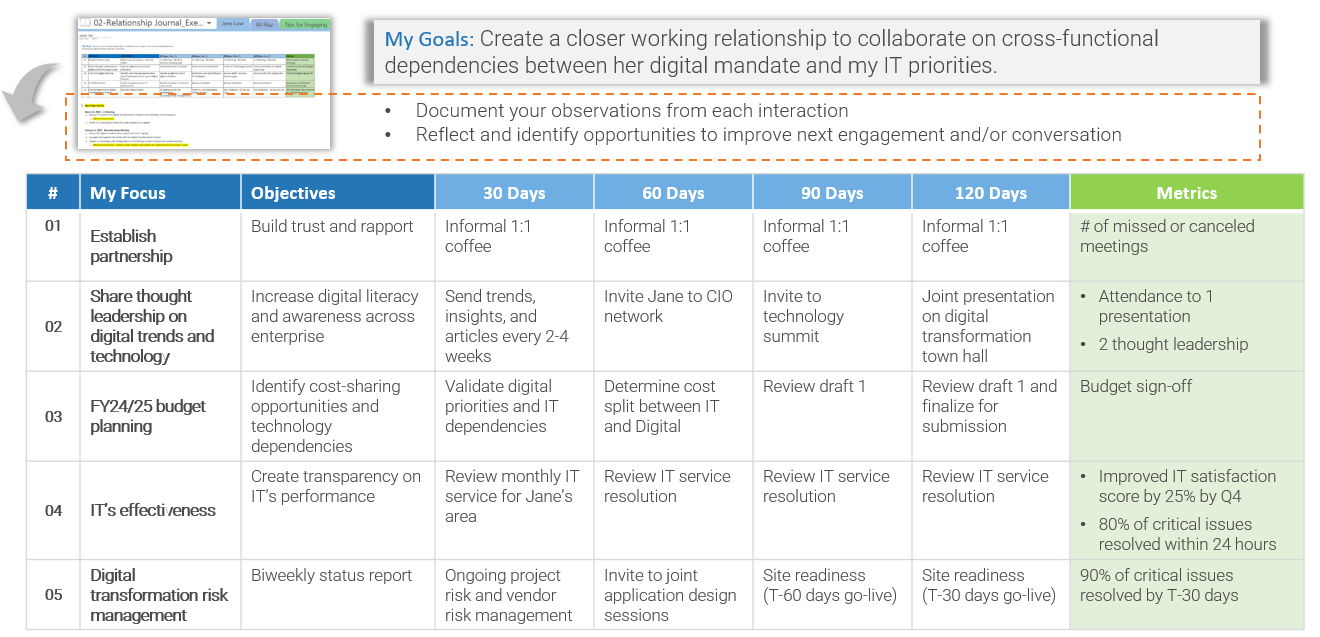
Make Relationship Management a Daily Habit
Management plans are living documents and need to be flexible to adapt to changes in stakeholder context.
Monitor and Adjust to Communicate Strategically

Building trust takes time and commitment. Treat every conversation with your key stakeholders as an investment in building the social capital to expand your span of influence when and where you need it to go. This requires making relationship management a daily habit. Action plans need to be a living document that is your personal journal to document your observations, feelings, and actions. Such a plan enables you to make constant adjustments along the relationship journey.
"Without involvement, there is no commitment. Mark it down, asterisk it, circle it, underline it."– Stephen Convey (LinkedIn, 2016)
Capture some simple metrics
If you can't measure your actions, you can't manage the relationship.
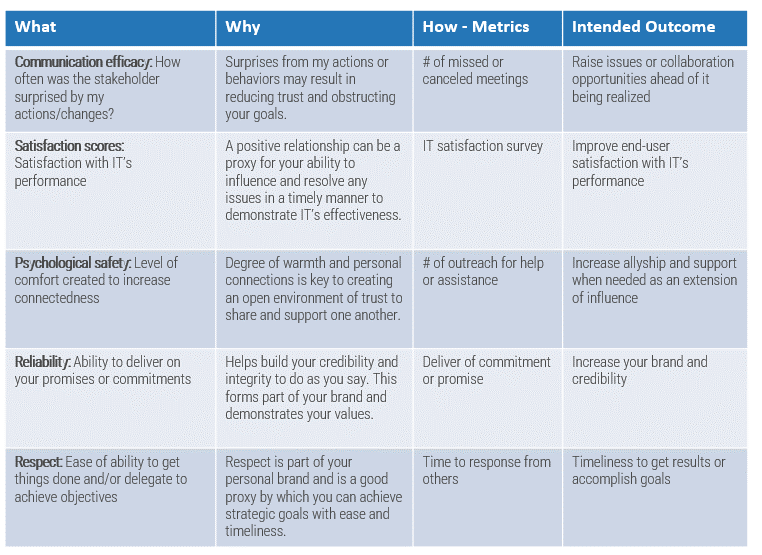
While a personal relationship journal is not a formal performance management tool, identifying some tangible measures will improve the likelihood of aligning your intent with outcomes. Good measures will help you focus your efforts, time, and resources appropriately.
Keep the following in mind:
- WHAT are you trying to measure?
Specific to the situation or scenario - WHY is this important?
Relevant to your personal goals - HOW will you measure?
Achievable and quantifiable - WHAT will the results tell you?
Intended outcome that is directional
Summary of accomplishments
Knowledge Gained
- Relationship management is critical to a CIO's success
- A personal relationship journal will help build:
- Customized approach to engaging stakeholders
- New communication skills to adapt to different work styles
New Concepts
- Work style assessment framework and engagement strategies
- Effective communication strategies
- Continuum of commitment to establish personal goals
Approach to Creating a Personal Journal
- Step-by-step approach to create a personal journal
- Key elements for inclusion in a journal
- Exemplar and recommendations
Related Info-Tech Research
| Tech Trends and Priorities Research CentreAccess Info-Tech's Tech Trend reports and research center to learn about current industry trends, shifts in markets, and disruptions that are impacting your industry and sector. This is a great starting place to gain insights into how the ecosystem is changing your business and the role of IT within it. |
| Embed Business Relationship Management in ITCreate a business relationship management (BRM) function in your program to foster a more effective partnership with the business and drive IT's value to the organization. |
| Become a Transformational CIOCollaborate with the business to lead transformation and leave behind a legacy of growth. |
Appendix: Framework
Content:
- Adaptation of DiSC profile assessment
- DiSC Profile Assessment
- FIRO-B Framework
- Experience Cube
Info-Tech's Adaption of DiSC Assessment

Info-Tech's Business Archetypes was created based on our analysis of the DiSC Profile and Myers-Briggs FIRO-B personality assessment tools that are focused on assessing interpersonal traits to better understand personalities.
The adaptation is due in part to Info-Tech's focus on not designing a personality assessment tool as this is neither the intent nor the expertise of our services. Instead, the primary purpose of this adaptation is to create a simple framework for our members to base their observations of behavioral cues to identify appropriate communication styles to better interact with key stakeholders.
Cautionary note:
Business archetypes are personas and should not be used to label, make assumptions and/or any other biased judgements about individual personalities. Every individual has all elements and aspects of traits across various spectrums. This must always remain at the forefront when utilizing any type of personality assessments or frameworks.
Click here to learn about DiSC Profile
Click here learn about FIRO-B
Click here learn about Experience Cube
DiSC Profile Assessment
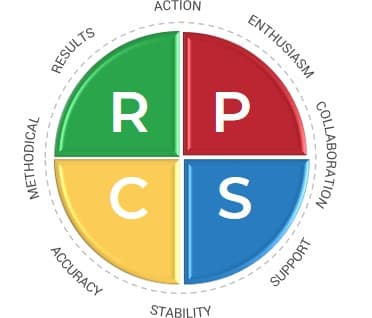
What is DiSC?
DisC® is a personal assessment tool that was originally developed in 1928 by psychologist William Moulton Marston, who designed it to predict job performance. The tool has evolved and is now widely used by thousands of organizations around the world, from large government agencies and Fortune 500 companies to nonprofit and small businesses, to help improve teamwork, communication, and productivity in the workplace. The tool provides a common language people can use to better understand themselves and those they interact with - and use this knowledge to reduce conflict and improve working relationships.
What does DiSC mean?
DiSC is an acronym that stands for the four main personality profiles described in the Everything DiSC model: (D)ominance, (i)nfluence, (S)teadiness, (C)onscientiousness
People with (D) personalities tend to be confident and emphasize accomplishing bottom-line results.
People with (i) personalities tend to be more open and emphasize relationships and influencing or persuading others.
People with (S) personalities tend to be dependable and emphasize cooperation and sincerity.
People with (C) personalities tend to emphasize quality, accuracy, expertise, and competency.
FIRO-B® – Interpersonal Assessment
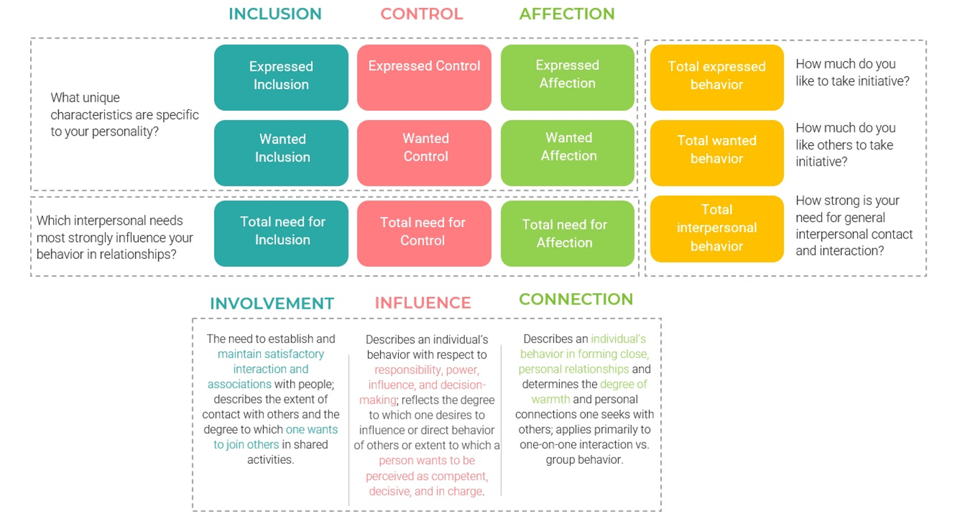
What is FIRO workplace relations?
The Fundamental Interpersonal Relations Orientation Behavior (FIRO-B®) tool has been around for forty years. The tool assesses your interpersonal needs and the impact of your behavior in the workplace. The framework reveals how individuals can shape and adapt their individual behaviors, influence others effectively, and build trust among colleagues. It has been an excellent resource for coaching individuals and teams about the underlying drivers behind their interactions with others to effectively build successful working relationships.
What does the FIRO framework measure?
The FIRO framework addresses five key questions that revolve around three interpersonal needs. Fundamentally, the framework focuses on how you want to express yourself toward others and how you want others to behave toward you. This interaction will ultimately result in the universal needs for (a) inclusion, (b) control, and (c) affection. The insights from the results are intended to help individuals adjust their behavior in relationships to get what they need while also building trust with others. This will allow you to better predict and adapt to different situations in the workplace.
How can FIRO influence individual and team performance in the workplace?
FIRO helps people recognize where they may be giving out mixed messages and prompts them to adapt their exhibited behaviors to build trust in their relationships. It also reveals ways of improving relationships by showing individuals how they are seen by others, and how this external view may differ from how they see themselves. Using this lens empowers people to adjust their behavior, enabling them to effectively influence others to achieve high performance.
In team settings, it is a rich source of information to explore motivations, underlying tensions, inconsistent behaviors, and the mixed messages that can lead to mistrust and derailment. It demonstrates how people may approach teamwork differently and explains the potential for inefficiencies and delays in delivery. Through the concept of behavioral flexibility, it helps defuse cultural stereotypes and streamline cross-cultural teams within organizations.
Go to this link to explore FIRO-B for Business
Experience Cube
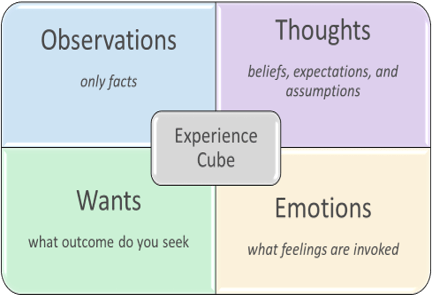
What is an experience cube?
The Experience Cube model was developed by Gervase Bushe, a professor of Leadership and Organization at the Simon Fraser University's school of Business and a thought leader in the field of organizational behavior. The experience cube is intended as a tool to plan and manage conversations to communicate more effectively in the moment. It does this by promoting self-awareness to better reduce anxiety and adapt to evolving and uncertain situations.
How does the experience cube work?
Using the four elements of the experience cube (Observations, Thoughts, Feelings, and Wants) helps you to separate your experience with the situation from your potential judgements about the situation. This approach removes blame and minimizes defensiveness, facilitating a positive discussion. The goal is to engage in a continuous internal feedback loop that allows you to walk through all four quadrants in the moment to help promote self-awareness. With heightened self-awareness, you may (1) remain curious and ask questions, (2) check-in for understanding and clarification, and (3) build consensus through agreement on shared purpose and next steps.
Observations: Sensory data (information you take in through your senses), primarily what you see and hear. What a video camera would record.
Thoughts: The meaning you add to your observations (i.e. the way you make sense of them, including your beliefs, expectations, assumptions, judgments, values, and principles). We call this the "story you make up."
Feelings: Your emotional or physiological response to the thoughts and observations. Feelings words such as sad, mad, glad, scared, or a description of what is happening in your body.
Wants: Clear description of the outcome you seek. Wants go deeper than a simple request for action. Once you clearly state what you want, there may be different ways to achieve it.
Go to this link to explore more: Experience Cube
Research Contributors and Experts

Joanne Lee
Principal, Research Director, CIO Advisory
Info-Tech Research Group
Joanne is a professional executive with over twenty-five years of experience in digital technology and management consulting spanning healthcare, government, municipal, and commercial sectors across Canada and globally. She has successfully led several large, complex digital and business transformation programs. A consummate strategist, her expertise spans digital and technology strategy, organizational redesign, large complex digital and business transformation, governance, process redesign, and PPM. Prior to joining Info-Tech Research Group, Joanne was a Director with KPMG's CIO Advisory management consulting services and the Digital Health practice lead for Western Canada. She brings a practical and evidence-based approach to complex problems enabled by technology.
Joanne holds a Master's degree in Business and Health Policy from the University of Toronto and a Bachelor of Science (Nursing) from the University of British Columbia.

Gord Harrison
Senior Vice President, Research and Advisory
Info-Tech Research Group
Gord Harrison, SVP, Research and Consulting, has been with Info-Tech Research Group since 2002. In that time, Gord leveraged his experience as the company's CIO, VP Research Operations, and SVP Research to bring the consulting and research teams together under his current role, and to further develop Info-Tech's practical, tactical, and value-oriented research product to the benefit of both organizations.
Prior to Info-Tech, Gord was an IT consultant for many years with a focus on business analysis, software development, technical architecture, and project management. His background of educational game software development, and later, insurance industry application development gave him a well-rounded foundation in many IT topics. Gord prides himself on bringing order out of chaos and his customer-first, early value agile philosophy keeps him focused on delivering exceptional experiences to our customers.

Angela Diop
Senior Director, Executive Services
Info-Tech Research Group
Angela has over twenty-five years of experience in healthcare, as both a healthcare provider and IT professional. She has spent over fifteen years leading technology departments and implementing, integrating, managing, and optimizing patient-facing and clinical information systems. She believes that a key to a healthcare organization's ability to optimize health information systems and infrastructure is to break the silos that exist in healthcare organizations.
Prior to joining Info-Tech, Angela was the Vice President of Information Services with Unity Health Care. She has demonstrated leadership and success in this area by fostering environments where business and IT collaborate to create systems and governance that are critical to providing patient care and sustaining organizational health.
Angela has a Bachelor of Science in Systems Engineering and Design from the University of Illinois and a Doctorate of Naturopathic Medicine from Bastyr University. She is a Certified CIO with the College of Healthcare Information Management Executives. She is a two-time Health Information Systems Society (HIMSS) Davies winner.

Edison Barreto
Senior Director, Executive Services
Info-Tech Research Group
Edison is a dynamic technology leader with experience growing different enterprises and changing IT through creating fast-paced organizations with cultural, modernization, and digital transformation initiatives. He is well versed in creating IT and business cross-functional leadership teams to align business goals with IT modernization and revenue growth. Over twenty-five years of Gaming, Hospitality, Retail, and F&B experience has given him a unique perspective on guiding and coaching the creation of IT department roadmaps to focus on business needs and execute successful changes.
Edison has broad business sector experience, including:
Hospitality, Gaming, Sports and Entertainment, IT policy and oversight, IT modernization, Cloud first programs, R&D, PCI, GRDP, Regulatory oversight, Mergers acquisitions and divestitures.

Mike Tweedie
Practice Lead, CIO Strategy
Info-Tech Research Group
Michael Tweedie is the Practice Lead, CIO – IT Strategy at Info-Tech Research Group, specializing in creating and delivering client-driven, project-based, practical research, and advisory. He brings more than twenty-five years of experience in technology and IT services as well as success in large enterprise digital transformations.
Prior to joining Info-Tech, Mike was responsible for technology at ADP Canada. In that role, Mike led several large transformation projects that covered core infrastructure, applications, and services and worked closely with and aligned vendors and partners. The results were seamless and transparent migrations to current services, like public cloud, and a completely revamped end-user landscape that allowed for and supported a fully remote workforce.
Prior to ADP, Mike was the North American Head of Engineering and Service Offerings for a large French IT services firm, with a focus on cloud adoption and complex ERP deployment and management; he managed large, diverse global teams and had responsibilities for end-to-end P&L management.
Mike holds a Bachelor's degree in Architecture from Ryerson University.

Carlene McCubbin
Practice Lead, People and Leadership
Info-Tech Research Group
Carlene McCubbin is a Research Lead for the CIO Advisory Practice at Info-Tech Research Group covering key topics in operating models & design, governance, and human capital development.
During her tenure at Info-Tech, Carlene has led the development of Info-Tech's Organization and Leadership practice and worked with multiple clients to leverage the methodologies by creating custom programs to fit each organization's needs.
Before joining Info-Tech, Carlene received her Master of Communications Management from McGill University, where she studied development of internal and external communications, government relations, and change management. Her education honed her abilities in rigorous research, data analysis, writing, and understanding the organization holistically, which has served her well in the business IT world.

Anubhav Sharma
Research Director, CIO Strategy
Info-Tech Research Group
Anubhav is a digital strategy and execution professional with extensive experience in leading large-scale transformation mandates for organizations both in North America and globally, including defining digital strategies for leading banks and spearheading a large-scale transformation project for a global logistics pioneer across ten countries. Prior to joining Info-Tech Research Group, he held several industry and consulting positions in Fortune 500 companies driving their business and technology strategies. In 2023, he was recognized as a "Top 50 Digital Innovator in Banking" by industry peers.
Anubhav holds an MBA in Strategy from HEC Paris, a Master's degree in Finance from IIT-Delhi, and a Bachelor's degree in Engineering.

Kim Osborne-Rodriguez
Research Director, CIO Strategy
Info-Tech Research Group
Kim is a professional engineer and Registered Communications Distribution Designer (RCDD) with over a decade of experience in management and engineering consulting spanning healthcare, higher education, and commercial sectors. She has worked on some of the largest hospital construction projects in Canada, from early visioning and IT strategy through to design, specifications, and construction administration. She brings a practical and evidence-based approach to digital transformation, with a track record of supporting successful implementations.
Kim holds a Bachelor's degree in Mechatronics Engineering from University of Waterloo.

Amanda Mathieson
Research Director, People and Leadership
Info-Tech Research Group
Amanda joined Info-Tech Research Group in 2019 and brings twenty years of expertise working in Canada, the US, and globally. Her expertise in leadership development, organizational change management, and performance and talent management comes from her experience in various industries spanning pharmaceutical, retail insurance, and financial services. She takes a practical, experiential approach to people and leadership development that is grounded in adult learning methodologies and leadership theory. She is passionate about identifying and developing potential talent, as well as ensuring the success of leaders as they transition into more senior roles.
Amanda has a Bachelor of Commerce degree and Master of Arts in Organization and Leadership Development from Fielding Graduate University, as well as a post-graduate diploma in Adult Learning Methodologies from St. Francis Xavier University. She also has certifications in Emotional Intelligence – EQ-i 2.0 & 360, Prosci ADKAR® Change Management, and Myers-Briggs Type Indicator Step I and II.
Bibliography
Bacey, Christopher. "KPMG/Harvey Nash CIO Survey finds most organizations lack enterprise-wide digital strategy." Harvey Nash/KPMG CIO Survey. Accessed Jan. 6, 2023. KPMG News Perspective - KPMG.us.com
Calvert, Wu-Pong Susanna. "The Importance of Rapport. Five tips for creating conversational reciprocity." Psychology Today Magazine. June 30, 2022. Accessed Feb. 10, 2023. psychologytoday.com/blog
Coaches Council. "14 Ways to Build More Meaningful Professional Relationships." Forbes Magazine. September 16, 2020. Accessed Feb. 20, 2023. forbes.com/forbescoachescouncil
Council members. "How to Build Authentic Business Relationships." Forbes Magazine. June 15, 2021. Accessed Jan. 15, 2023. Forbes.com/business council
Deloitte. "Chief Information Officer (CIO) Labs. Transform and advance the role of the CIO." The CIO program. Accessed Feb. 5, 2021.
Dharsarathy, Anusha et al. "The CIO challenge: Modern business needs a new kind of tech leader." McKinsey and Company. January 27, 2020. Accessed Feb 2023. Mckinsey.com
DiSC profile. "What is DiSC?" DiSC Profile Website. Accessed Feb. 5, 2023. discprofile.com
FIRO Assessment. "Better working relationships". Myers Brigg Website. Resource document downloaded Feb. 10, 2023. myersbriggs.com/article
Fripp, Patricia. "Frippicisms." Website. Accessed Feb. 25, 2023. fripp.com
Grossman, Rhys. "The Rise of the Chief Digital Officer." Russell Reynolds Insights, January 1, 2012. Accessed Jan. 5, 2023. Rise of the Chief Digital Officer - russellreynolds.com
Kambil, Ajit. "Influencing stakeholders: Persuade, trade, or compel." Deloitte Article. August 9, 2017. Accessed Feb. 19, 2023. www2.deloitte.com/insights
Kambil, Ajit. "Navigating the C-suite: Managing Stakeholder Relationships." Deloitte Article. March 8, 2017. Accessed Feb. 19, 2023. www2.deloitte.com/insights
Korn Ferry. "Age and tenure in the C-suite." Kornferry.com. Accessed Jan. 6, 2023. Korn Ferry Study Reveals Trends by Title and Industry
Kumthekar, Uday. "Communication Channels in Project". Linkedin.com, 3 March 2020. Accessed April 27, 2023. Linkedin.com/Pulse/Communication Channels
McWilliams, Allison. "Why You Need Effective Relationships at Work." Psychology Today Magazine. May 5, 2022. Accessed Feb. 11, 2023. psychologytoday.com/blog
McKinsey & Company. "Why do most transformations fail? A conversation with Harry Robinson." Transformation Practice. July 2019. Accessed Jan. 10, 2023. Mckinsey.com
Mind Tools Content Team. "Building Good Work Relationships." MindTools Article. Accessed Feb. 11, 2023. mindtools.com/building good work relationships
Pratt, Mary. "Why the CIO-CFO relationship is key to digital success." TechTarget Magazine. November 11, 2021. Accessed Feb. 2023. Techtarget.com
LaMountain, Dennis. "Quote of the Week: No Involvement, No Commitment". Linkedin.com, 3 April 2016. Accessed April 27, 2023. Linkedin.com/pulse/quote-week-involvement
PwC Pulse Survey. "Managing Business Risks". PwC Library. 2022. Accessed Jan. 30, 2023. pwc.com/pulse-survey
Rowell, Darin. "3 Traits of a Strong Professional Relationship." Harvard Business Review. August 8, 2019. Accessed Feb. 20, 2023. hbr.org/2019/Traits of a strong professional relationship
Sinek, Simon. "The Optimism Company from Simon Sinek." Website. Image Source. Accessed, Feb. 21, 2023. simonsinek.com
Sinek, Simon. "There are only two ways to influence human behavior: you can manipulate it or you can inspire it." Twitter. Dec 9, 2022. Accessed Feb. 20, 2023. twitter.com/simonsinek
Whitbourne, Susan Krauss. "10 Ways to Measure the Health of Relationship." Psychology Today Magazine. Aug. 7, 2021. Accessed Jan. 30, 2023. psychologytoday.com/blog
Buying Options
Effectively Manage CxO Relations
IT Risk Management · IT Leadership & Strategy implementation · Operational Management · Service Delivery · Organizational Management · Process Improvements · ITIL, CORM, Agile · Cost Control · Business Process Analysis · Technology Development · Project Implementation · International Coordination · In & Outsourcing · Customer Care · Multilingual: Dutch, English, French, German, Japanese · Entrepreneur
Tymans Group is a brand by Gert Taeymans BV
Gert Taeymans bv
Europe: Koning Albertstraat 136, 2070 Burcht, Belgium — VAT No: BE0685.974.694 — phone: +32 (0) 468.142.754
USA: 4023 KENNETT PIKE, SUITE 751, GREENVILLE, DE 19807 — Phone: 1-917-473-8669
Copyright 2017-2022 Gert Taeymans BV

